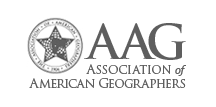
Two graduate students will present at the March 21 geography seminar at 2 p.m. in 228 Hardin Hall. The seminar is an opportunity for students who will be presenting papers at the annual meeting of the Association of American Geographers (AAG) to practice their presentations. All are invited.
The annual meeting of AAG will take place April 8-12 in Tampa, Fla. The same procedure that will be used in Tampa will be followed at the seminar. Each speaker will have 20 minutes for both the presentation and questions. The schedule of March 21 presenters is listed below.
Victoria Alapo
"Contribution to the History of Christianity and to European Scholarship: A Case Study of the Historical Kingdom of Ethiopia"
Abstract: Ethiopia was one of the very first countries in the world to be Christianized (in the 1st century A.D.), thus marking the beginnings of an indigenous form of the religion, sometimes referred to as "Coptic Christianity" which has endured for centuries. Remarkably, Ethiopia was one of the first countries in the world, and the first African country, to be declared a Christian State, about A.D. 300 (even before the Roman Empire!). More importantly, unlike most of Sub-Saharan Africa, Ethiopia's Christianity was introduced into the country by one of their own (and not by Europeans) as referenced from historical documents such as the Bible and secular texts. This paper also shows how centuries-old Ethiopian scholarship, through its indigenous manuscripts (in ancient traditional Ge'ez writing script), greatly influenced European scholarship, especially during the Renaissance.
Robert C. Shepard and John C. Archer
"Nebraska Gender Geodemographics: Residential Patterns of Young Adults, 1930 - 2010"
Abstract: Population decline across rural areas of the Great Plains since 1930 has been well documented. Nebraska provides a strong example of such a phenomenon. Census years 1930, 1960, 1990 and 2010 show distinctive, divergent trends. Dramatic age and sex composition shifts exist for counties classed as rural, urban, micropolitan, or metropolitan. Young adults' migration patterns have a significant role in population change. Most researchers have discussed migration patterns of "young people" as if this group was homogeneous. Yet gender affects youths' opportunities and residential preferences.
To better understand the gender differences in residential patterns, sex ratio data, calculated from US Census records at the county and sub-county levels for the years 1990, 2000 and 2010, were analyzed. Age-sex "cohorts" were established and compared over a period of 10 years. Although relatively more young men left areas of low population, places with populations of 800 or fewer residents still experienced an increasing imbalance between men and women. Conversely, places of more than 5,000 residents experienced an increase in young women relative to young men. Further analysis provides evidence that young women are disproportionately more attracted to urban places; these places appear to be trending toward far more balance between young men and young women compared to less populous places.
Finally, more research, of a more qualitative format, is needed to fully understand contemporary young Nebraskans' attitudes, aspirations, and place attachments. Studies should give human voice to the numbers by deeply examining the push and pull factors causing young Nebraskans to migrate.